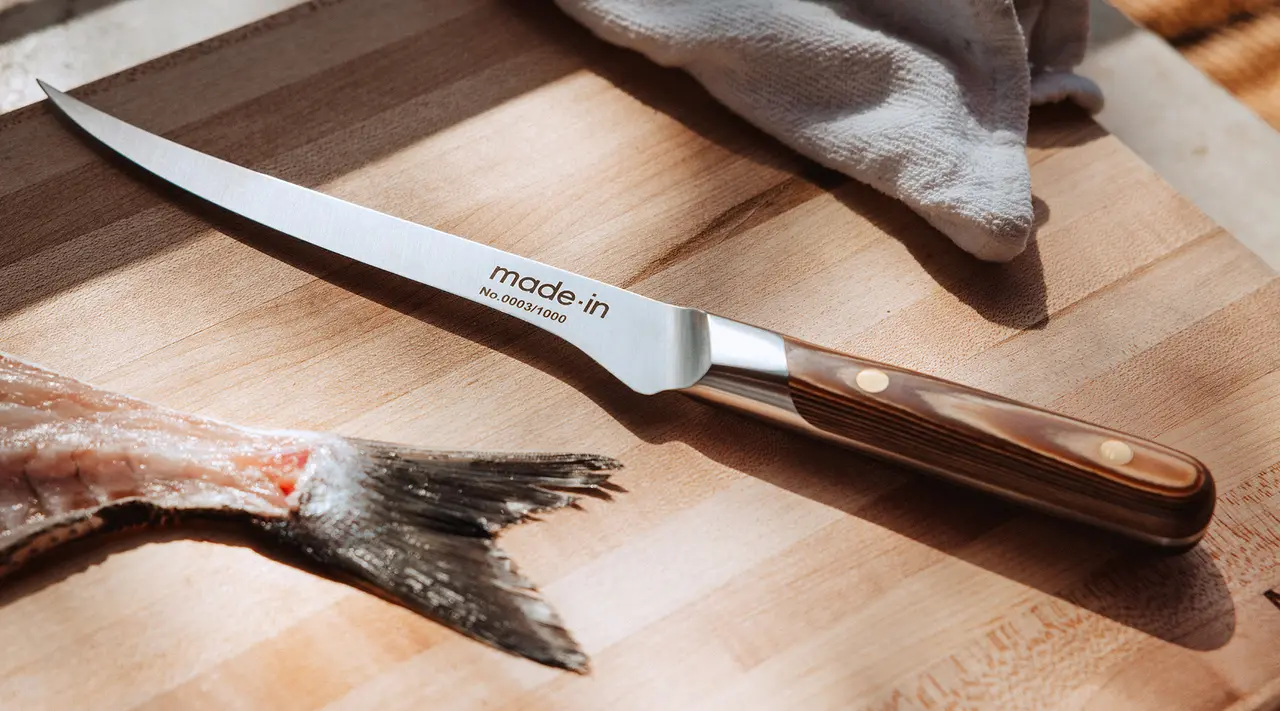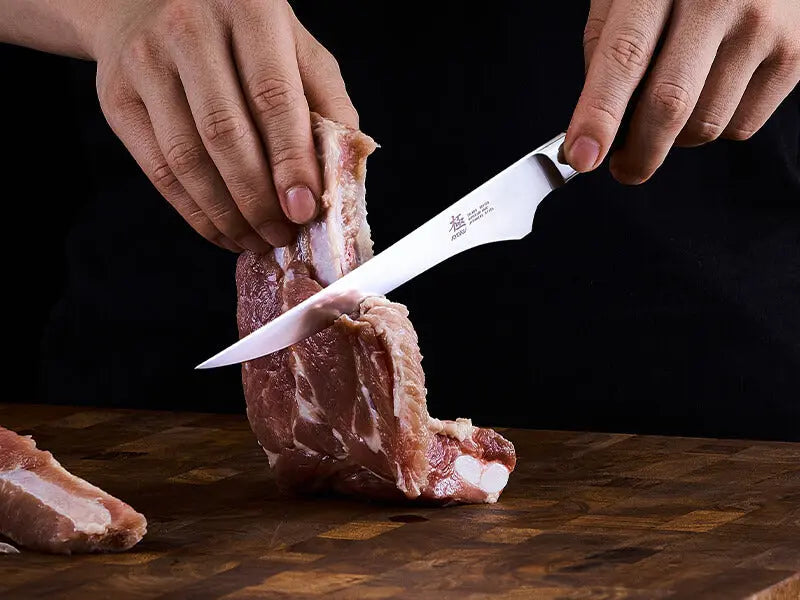When it comes to the world of culinary arts, the tools of the trade can make a significant difference in the outcome of a dish. Two essential tools in any kitchen are the boning knife and the paring knife. Understanding the differences between these two knives can help both professional chefs and home cooks enhance their culinary skills and efficiency. In this article, we explore the boning knife vs paring knife debate, providing insights into their unique features and uses.

Understanding the Boning Knife
The boning knife is a specialized kitchen tool designed to remove bones from meat, poultry, and fish. Its narrow and flexible blade allows for precision cutting around bones, joints, and cartilage, making it an indispensable tool for butchers and chefs alike. Learn more about boning knives.
Features of a Boning Knife
Typically, a boning knife has a blade length of 5 to 7 inches. The blade is thin and curved, allowing it to maneuver around bones with ease. Some boning knives have a straight blade, which is ideal for cutting through tougher meats.
Uses of a Boning Knife
Primarily, boning knives are used for removing bones from cuts of meat, but they can also be used for trimming fat and sinew. They are particularly handy for preparing fish or poultry, where precision is crucial. For more detailed tips, check out professional tips on using a boning knife.
Exploring the Paring Knife
The paring knife is another essential kitchen tool, known for its versatility. It is smaller than the boning knife and is primarily used for tasks that require more precision, such as peeling, trimming, and slicing small fruits and vegetables.
Features of a Paring Knife
Paring knives typically have a blade length of 3 to 4 inches. The blade is straight and pointed, making it perfect for intricate tasks. Its lightweight and compact design make it easy to handle, providing excellent control.
Uses of a Paring Knife
Paring knives are ideal for peeling fruits and vegetables, deveining shrimp, and creating decorative garnishes. Their precision makes them suitable for tasks that require a delicate touch.
Boning Knife vs Paring Knife: Key Differences
Although both knives are essential in the kitchen, they serve different purposes. The main differences lie in their design, size, and intended use. The boning knife is larger, with a flexible blade for working around bones, while the paring knife is smaller and designed for precision tasks.
Blade Design
The boning knife’s blade is narrow and curved, while the paring knife’s blade is straight and pointed. This difference in design reflects their distinct functions in the kitchen.
Size and Weight
The boning knife is generally larger and heavier than the paring knife, which is more compact and lightweight. These attributes affect how each knife is used in culinary tasks.
Functionality
The boning knife’s primary function is to remove bones, while the paring knife is used for peeling, trimming, and slicing small items. Understanding these functions helps in choosing the right knife for specific tasks.
Choosing the Right Knife for Your Needs
When deciding between a boning knife vs paring knife, consider the tasks you frequently perform in the kitchen. For those who often work with meat, a boning knife is indispensable. Conversely, if you frequently prepare fruits and vegetables, a paring knife is more suitable.
Professional and Home Use
Both knives are valuable for professional chefs and home cooks. Professional chefs might have a wider range of specialized knives, but for home use, these two knives cover many essential tasks.
Maintenance and Care
Proper maintenance is crucial for the longevity of both knives. Regular sharpening and careful storage will ensure they remain effective tools in your kitchen arsenal. Check out tips on maintaining boning knives.
Conclusion
The debate between boning knife vs paring knife ultimately comes down to their specific applications. Both knives are essential for different tasks, and understanding their differences can enhance your culinary experience. Whether you’re a professional chef or a home cook, having both knives in your kitchen will equip you to handle a variety of cooking challenges with precision and ease.

FAQ Section
What is the primary use of a boning knife?
A boning knife is primarily used for removing bones from cuts of meat, poultry, and fish.
Can a paring knife be used for boning tasks?
No, a paring knife is not suitable for boning tasks due to its smaller size and design. It is better suited for precision tasks like peeling and trimming.
How do I maintain my kitchen knives?
Regular sharpening and careful storage are essential for maintaining the quality of your kitchen knives. Proper cleaning and avoiding dishwasher use also help preserve their sharpness and longevity.
This article contains affiliate links. We may earn a commission at no extra cost to you.


